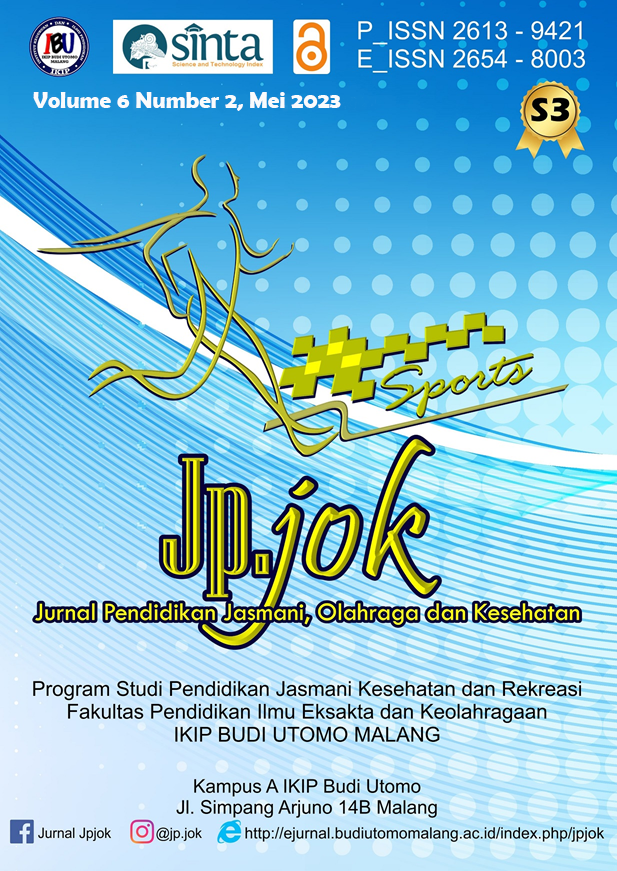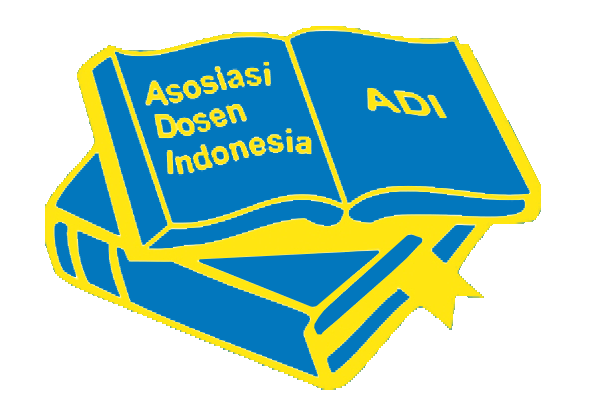Predictor of Women's Handball Athlete Fitness Level Malang City Through Fat-Free Mass Measurement
Abstract
Athletes are individuals who focus on the world of sports according to their sport. Handball requires athletes to perform repetitive high-intensity activities in running, attacking and defending tactics, interspersed with periods of low intensity and/or rest. Physical fitness as a benchmark for coaches to determine what athletes need to be prepared for. There are several elements that can be seen by changes in the athlete's physical condition through anthropometric characteristics, for example, fat-free mass. The main objective of this study was to assess changes in anthropometric body composition, namely, lean body mass in female handball athletes within 2 months and ensure that this predictor can contribute to sports success. The samples involved were 12 female handball athletes. The instrument used to measure body composition is the Seca mBCA 514 Medical Body Composition Analyzer. The results of this study were that lean body mass increased from the first month to the second month with p = 0.01. This study shows data through pre-test-treatment-post test treatment on female handball athletes. Changes in anthropometry, body composition, and physical fitness are some of the predictors of successful sports achievements in a competition.
References
Campa, F., Toselli, S., Mazzilli, M., Gobbo, L. A., & Coratella, G. (2021). Assessment of body composition in athletes: A narrative review of available methods with special reference to quantitative and qualitative bioimpedance analysis. Nutrients, 13(5). https://doi.org/10.3390/nu13051620
Cavedon, V., Sandri, M., Peluso, I., Zancanaro, C., & Milanese, C. (2021). Body composition and bone mineral density in athletes with a physical impairment. PeerJ, 9, 1–24. https://doi.org/10.7717/peerj.11296
Eklund, E., Hellberg, A., Berglund, B., Brismar, K., & Hirschberg, A. L. (2021). IGF-I and IGFBP-1 in Relation to Body Composition and Physical Performance in Female Olympic Athletes. Frontiers in Endocrinology, 12(August), 1–10. https://doi.org/10.3389/fendo.2021.708421
Gómez-Bruton, A., Marín-Puyalto, J., Muñiz-Pardos, B., Lozano-Berges, G., Cadenas-Sanchez, C., Matute-Llorente, A., … Vicente-Rodríguez, G. (2020). Association Between Physical Fitness and Bone Strength and Structure in 3- to 5-Year-Old Children. Sports Health, 12(5), 431–440. https://doi.org/10.1177/1941738120913645
Hamdani, S. M. Z. H., Jie, Z., Hadier, S. G., Tian, W., Hamdani, S. D. H., Danish, S. S., & Fatima, S. U. (2022). Relationship between Moderate-to-Vigorous Physical Activity with Health-Related Physical Fitness Indicators among Pakistani School Adolescents: Yaali-Pak Study. Scientific World Journal, 2022. https://doi.org/10.1155/2022/6402028
Heydenreich, J., Kayser, B., Schutz, Y., & Melzer, K. (2017). Total Energy Expenditure, Energy Intake, and Body Composition in Endurance Athletes Across the Training Season: A Systematic Review. Sports Medicine - Open, 3(1), 1–24. https://doi.org/10.1186/s40798-017-0076-1
Jagim, A. R., Fields, J. B., Magee, M., Kerksick, C., Luedke, J., Erickson, J., & Jones, M. T. (2021). The influence of sport nutrition knowledge on body composition and perceptions of dietary requirements in collegiate athletes. Nutrients, 13(7), 1–11. https://doi.org/10.3390/nu13072239
Lee, C. K., Sim, Y. K., Lee, J. H., Yook, J. S., Ha, S. M., Seo, E. C., … Ha, M. S. (2022). The relationship between body composition and physical fitness and the effect of exercise according to the level of childhood obesity using the mgpa model. International Journal of Environmental Research and Public Health, 19(1), 1–19. https://doi.org/10.3390/ijerph19010487
Lukaski, H., & Raymond-Pope, C. J. (2021). New Frontiers of Body Composition in Sport. International Journal of Sports Medicine, 42(7), 588–601. https://doi.org/10.1055/a-1373-5881
Muntaner-Mas, A., Mazzoli, E., Abbott, G., Mavilidi, M. F., & Galmes-Panades, A. M. (2022). Do Physical Fitness and Executive Function Mediate the Relationship between Physical Activity and Academic Achievement? An Examination Using Structural Equation Modelling. Children, 9(6). https://doi.org/10.3390/children9060823
Padilla-Moledo, C., Fernández-Santos, J. D. R., Izquierdo-Gómez, R., Esteban-Cornejo, I., Rio-Cozar, P., Carbonell-Baeza, A., & Castro-Piñero, J. (2020). Physical fitness and self-rated health in children and adolescents: Cross-sectional and longitudinal study. International Journal of Environmental Research and Public Health, 17(7), 1–15. https://doi.org/10.3390/ijerph17072413
Prieske, O., Chaabene, H., Gäbler, M., Herz, M., Helm, N., Markov, A., & Granacher, U. (2020). Seasonal changes in anthropometry, body composition, and physical fitness and the relationships with sporting success in young sub-elite judo athletes: An exploratory study. International Journal of Environmental Research and Public Health, 17(19), 1–17. https://doi.org/10.3390/ijerph17197169
Rodriguez-Ayllon, M., Esteban-Cornejo, I., Verdejo-Román, J., Muetzel, R. L., Mora-Gonzalez, J., Cadenas-Sanchez, C., … Ortega, F. B. (2020). Physical fitness and white matter microstructure in children with overweight or obesity: the ActiveBrains project. Scientific Reports, 10(1), 1–9. https://doi.org/10.1038/s41598-020-67996-2
Sanfilippo, J., Krueger, D., Heiderscheit, B., & Binkley, N. (2019). Dual-Energy X-Ray Absorptiometry Body Composition in NCAA Division I Athletes: Exploration of Mass Distribution. Sports Health, 11(5), 453–460. https://doi.org/10.1177/1941738119861572
Susanto, E. (2017). Pengembangan tes keterampilan dasar olahraga bola tangan bagi mahasiswa. Jurnal Penelitian Dan Evaluasi Pendidikan, 21(1), 116–125. https://doi.org/10.21831/pep.v21i1.15784
Yip, K. M., Wong, S. W. S., Chua, G. T., So, H. K., Ho, F. K., Wong, R. S., … Ip, P. (2022). Age- and Sex-Specific Physical Fitness Reference and Association with Body Mass Index in Hong Kong Chinese Schoolchildren. International Journal of Environmental Research and Public Health, 19(22), 1–16. https://doi.org/10.3390/ijerph192215346
Copyright (c) 2023 Jp.jok (Jurnal Pendidikan Jasmani, Olahraga dan Kesehatan)

This work is licensed under a Creative Commons Attribution-ShareAlike 4.0 International License.
Authors retain copyright and grant the journal right of first publication with the work simultaneously licensed under a Creative Commons Attribution 4.0 International License that allows others to share the work with an acknowledgement of the work's authorship and initial publication in this journal.





.png)






